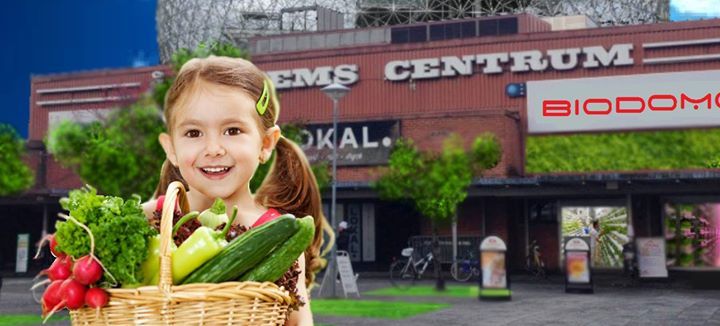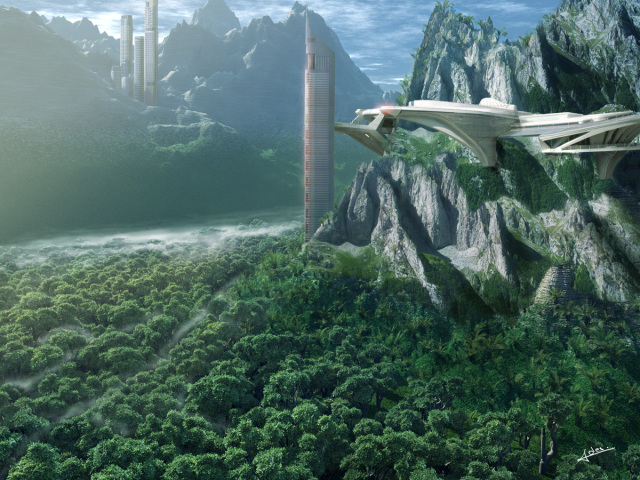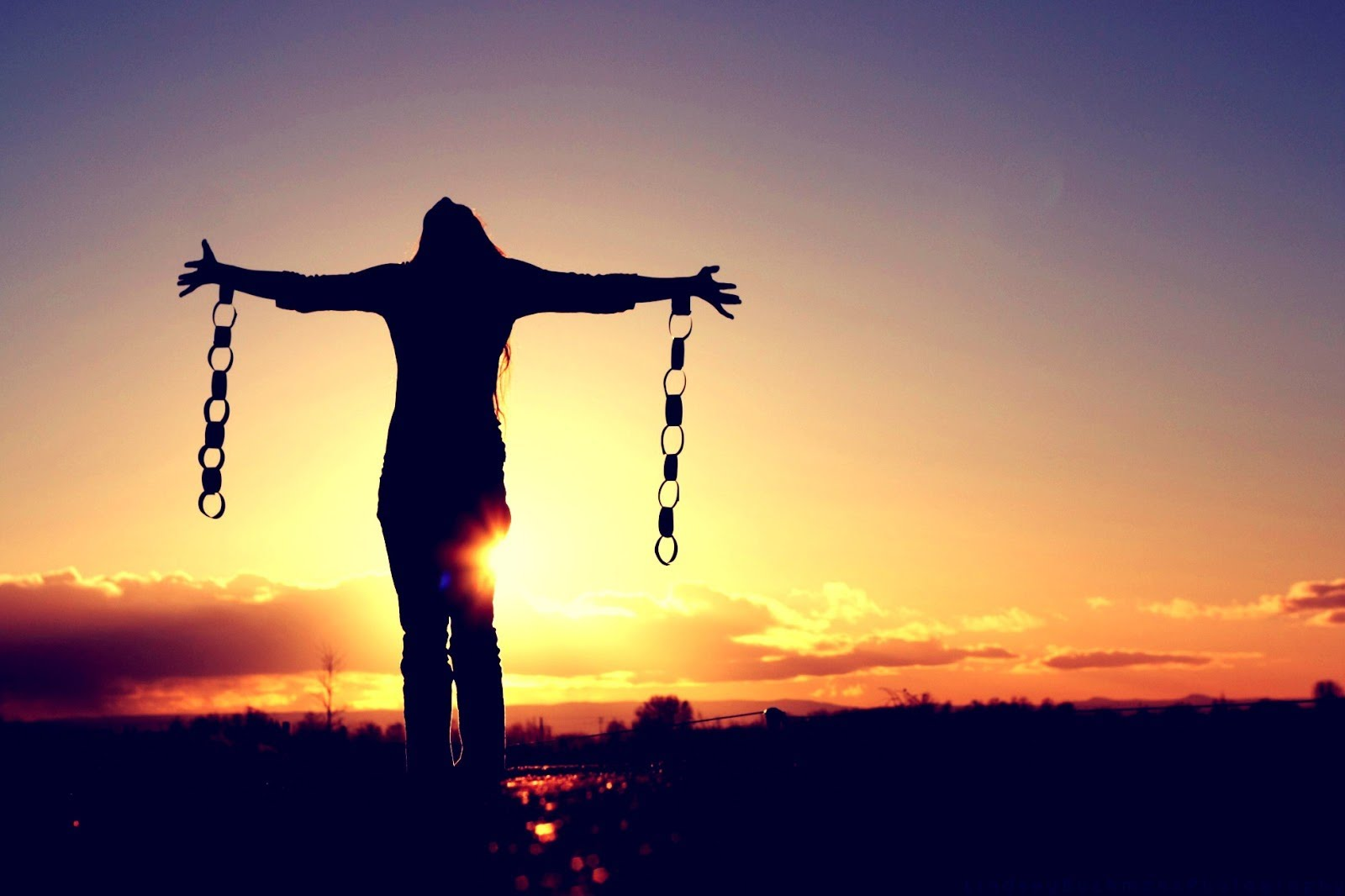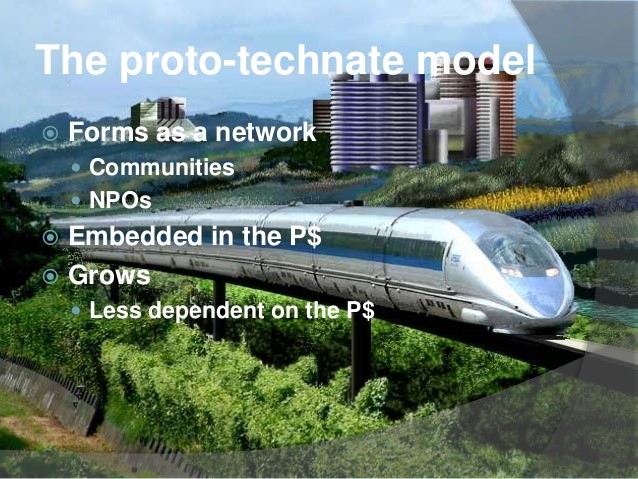There is a rising awareness, but this awareness is segmented, incomplete and muddled by the interference of other issues into the equation. Our compartmentalised understanding of reality allows our elected leaders to indulge in the comfortable illusion that the bad environmental effects can be separated from the “good socio-economic system”. Yet, humanity will have to prevail on this one, or face a crisis unprecedented in the history of our species. In the most developed nations, celebrity gossip and twitter crises dominate headlines – yet mother nature does not care much for celebrities or for moral panics.
The Earth Organisation for Sustainability (the EOS) is formed with the mission of designing and testing alternative resource management systems, primarily of a socio-economic nature, in order to provide alternatives to the current order and facilitate a route towards a sustainable future civilization able to shelter and offer an equitable standard of living for 8-9 billion human beings (which is what the population around 2050 will gravitate around).
Our mission objective thus will inevitably form our methodologies of reaching out. That is not all, however, for during long courses of our existence we have been forced to operate with little resources at our disposal, which has taught us an ability to economise and to value creative utilisation of resources and time.
The purpose of this article is to describe how we are working and how it relates to our goals. It will also tell you what you can do to facilitate change in your environment.
Summary
- EOS activities can be summarised into three types – Research, Education and Social Activism.
- Research can be divided into theory, innovation, application and data gathering.
- Education consists of lectures, book tables and other forms of activities.
- Social Activism, finally, is the process of activating neighbourhoods in taking active control of their own fate and strive towards a sustainable transition.
- Our activities are facilitated through Holons, semi-autonomous units through which our members are organising.
- Everyone who is an EOS member can start a Holon!

Research
The foundation of the EOS is the scientific principle. This expresses itself through the employment of the scientific method, of the application of empiricism coupled with information generously provided by the scientific community, and of conservative interpretations of research data. It means that whatever we base our analysis on must be on the most recent estimates by respected institutions in the environmental fields, but that we must be open for the fact that these data may be altered with new information. Our own research must be open for peer review and falsifiable – meaning that others should be able to conduct the same experiments as us under the same conditions and achieve similar results.
Our main hypothesis is that a society based around the principles outlined in The Design would be able to better fulfil the three criteria of sustainability which we have defined. Our main goal is to put this hypothesis to test, both to identify general flaws within it and to find areas where it can be continuously improved – since we hold the belief that reality will always be too complex and contain too many parameters to be able to be perfectly digitally simulated.
The outlines of the civilization described in the book are also based on physical factors which are scientifically defined – since the physical reality itself on a macro scale is only definable through metrics provided by science. Thus, our vision for the future resource management system is based on physics, not metaphysics. We desire to improve on the tools of data acquisition and constantly strive towards a more perfect understanding of the physical outline of our Earth.
Science is however only our master insofar it serves us in better providing a viable path. We must avoid the trappings of scientism and of a fetishisation of science in itself. Science is simply the least flawed methodology to attain knowledge about the physical reality, but we do not believe it in itself can define morality, values or ideology – especially as utilitarianism taken to the extreme can become very destructive for the sanctity of life and of the human being.

Education
We have several different types of educational activities. This website is one of them, though admittedly it’s a work in progress. The website has a potential reach to millions of people throughout the world, and exists to spur interest in our activities and to inspire the masses, as well as attracting future members and partners.
On the ground, we have educational activities too – Lectures for example.
Our lectures are usually open for the public, and disseminates the Design or the Ideology of the EOS in a comprised manner, usually for fifty minutes every time. If possible, we aim to strike cooperation with organisations that can provide space for the information sharing. After the lecture, the audience should be able to talk with the lecturer, ask questions about the topic and – if interested – receive information on how to join the EOS.
Another option for dissemination is to hold a book table, where you inform about EOS and showcase its projects for the world. The table should contain brochures, comprised texts about the EOS, possibly images or models of the project intended, and a banner or roll-up displaying our logotype and the website address.
Lastly, we have a page on Facebook to a linked group which currently has around 4000 members (https://www.facebook.com/eosprojects/). The page and the group displays information from multiple sources, and allows us to engage with the public in discussions and information-spreading. It also allows us a platform to spread our message, allow people an opportunity to join us and to network.
For 2018, we are planning to further strengthening our social media profile, amongst other things with podcasts.
Social Activism

Social activism for us is a matter about having a positive impact on local communities, regarding the issue of transition towards an ecologically, economically and socially sustainable future for that community. It could equally well be labelled “practivism” since what we aim to do is to organise people and contribute something tangible to their community.
One example is the biodome we are raising in the area of Alidhem, Umea, and plan to donate to the urban gardeners. While we are in the process of constructing it, we are engaging the urban gardeners and the public, inviting them to take interest and thus enlightening them about our existence and – more importantly – about the situation of our planet. It is important to engage people on their level, and connect what we are aiming to do with the needs and concerns of their communities. An organisation is abstract, a global crisis is possibly even more abstract – what we need to do is to bring these issues to the streets, parks and community meeting spots, to engage people.
Our primary goal should not be to recruit more members – even though we welcome anyone who wants to contribute to our goals and who shares our values. Rather, we want to change the public discourse, and transmit the severity of the approaching mass extinction event while pointing at solutions that can give people the courage and conviction to organise. Green consumerism is a good step, but not sufficient to transition the world towards sustainability – for that we need people to organise to transition their own communities. We want to be a spark which facilitates this mobilisation, and a conduit which allows groups already engaged to network horizontally and vertically.
This will also give us access to geographic, economic areas where we can field test The Design and expose it for stress in a dynamic environment where there are unknown factors which we could not have predicted.
Building a Proto-technate

A proto-technate, as envisioned by our former chairperson Dr Andrew Wallace, is an integrated vertical network which internally works according to the principles outlined in the Design. Each node – or holon – of the network is a semi-autonomous unit which provides some of its yield to the wider network.
One example would be if we establish a 3D-printing workshop in Alidhem, and we sustain the dome with upgrades and with maintenance, as well as repairing garden tools for the urban gardeners. In turn, they donate a part of their harvest to the workshop. This form of resource exchange can later on be replaced with a primitive form of energy accounting. Imagine then that we get a powerplant operating, maybe in Umea, or maybe in southern Sweden, and that it supplants some of its income to our other operations as well as those of the organisations we cooperate with. Gradually, we create a network which will become more and more self-sufficient, while yet being embedded in the regular capitalist economy.
In some regards, this is why our three aspects are so neatly tied together, because the proto-technate as an ideal embodies all of these three goals.
What you can do

Imagine that a stranger on the bus strikes up a conversation with you, and that the subject moves from pleasantries into serious issues, such as terrorism, religion, immigration, the housing crisis, the upcoming political election or trivialities such as a celebrity being caught uttering something socially unacceptable.
You, as an EOS activist or a sympathiser of our cause, changes the subject by the following words: “Excuse me, but the most important issue of our time is the fact that we are using the equivalent of what 1,4 Earths can provide for us every year, and that we need to find a way to reduce our global footprints.”
By those words, and those words alone, you have brought the transition towards a sustainable world a little bit closer to fruition. Maybe a few seconds, maybe a few breaths. But today, in our age, every moment is invaluable.
Don’t believe me?

It is said that gravity always works both ways. You are bound to the Earth because its mass is so great in comparison to yours it might well be infinite. But it is finite, and your mass does actually affect the Earth a little bit as well, just a tiny, minuscule amount. And even the Earth itself was once just a grain of dust which happened to be slightly larger than its most immediate neighbour. Remember that.
The same could be said of our civilization on Earth, and its cultures. Most of the major cultures of history were originally formed by tiny groups devoted to a cause – not all of them worthy. The world’s largest religion today was once just a handful of schismatic Hebrews. The world’s second largest religion was in its infancy just a hundred followers camped out in an oasis near nowhere.
Language is the most powerful hacking tool there is, and can be used for destructive and creative processes alike.
So, let’s say that you are an EOS member isolated from the hub of the organisation, maybe alone in your country. Do not despair and do not become demotivated. Instead, your first task should be to expand so you are two people with regular contact. Your goal from then on could take the route of research, education or social activism, but any of these three routes should facilitate the transition we all want to see realised in the world.
And remember: You are not alone.
